Toe fungus is a concern for many people. Itching, burning and unsightly skin and nails are just a few of them. This disease is dangerous and its complications are even more difficult to cure. However, if you take fungal infections (mycosis) seriously, you can solve the problem.
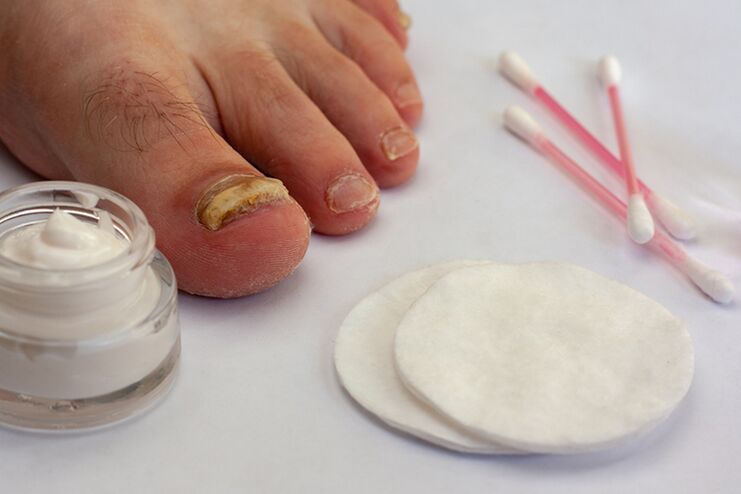
Why does fungus appear on the feet?
Fungus is an infectious substance that affects the skin. These are complex and extremely tenacious microorganisms. Therefore, fungal diseases require serious and comprehensive treatment.
Fungi have their favorite habitat on the skin. First, it is the skin of the toes and nails. The reason is understandable-the feet are usually located inside the shoes, where there is a lot of moisture and dirt, and the temperature is also very high. Therefore, the fungus living on the feet has a lot of food and a good microclimate for reproduction. Certain types of complex fungi are more likely to infect the skin, while other types of fungi (such as yeast and mold) prefer nail plates. It is also possible to infect several types of fungi at the same time.
Contributes to the development of toe fungus:
- Decrease local and general immunity;
- Poor foot hygiene;
- The shoes are uncomfortable and tight;
- Change socks or stockings irregularly;
- Wear socks or stockings made of synthetic, breathable materials;
- Periodic hypothermia or overheated feet;
- Circulatory disorders in the legs;
- Venous convulsions
- Chronic diseases of the cardiovascular system, diabetes;
- Long-term antibiotic treatment;
- Increased sweating in the legs;
- Lack of vitamins and minerals in the body;
- Mechanical damage to the skin, calluses, foot injuries;
- Excessive weight and excessive movement of the legs;
- Irregular trimming of toenails.
The most important of these factors are decreased immunity and poor blood circulation in the legs. Due to various reasons, immunity may decrease. Usually these are serious chronic diseases, mainly contagious. Moreover, immunity may be reduced due to HIV, taking immunosuppressants and cancer. It is also important that blood circulation in the toes is violated due to vascular disease, blood, diabetes, smoking.
Both men and women can suffer from foot fungal disease. They are more common in adults than in children.
Certain types of fungi constantly inhabit the skin and are only activated under adverse circumstances, such as Candida fungi. Other species spread from person to person. If the person does not use personal shoes, they may get infected when going to the gym, bathing, or showering. People who wear other people's shoes or socks, or let others use shoes, also put themselves at a huge risk of infection. Usually, infection occurs when using the same towels, manicure accessories, etc. Factors that increase the possibility of infection are cuts on the surface of the skin and deformation of the nail plate.
Symptoms of toe mycosis
The main symptoms of foot fungal disease are itching and burning. There may also be skin redness, small blisters, increased skin peeling and roughness, and unpleasant odors. The initial symptoms of dermatophytes can be confused with simple irritation and abrasions.
Symptoms of onychomycosis
The fungus not only affects the skin, but also the nails. The last type of fungal disease is called onychomycosis. The main symptoms of onychomycosis are changes in nail structure and type, and increased brittleness. The nail turns yellow, grooves and cracks appear on its surface, and the nail plate becomes thick and deformed. If left untreated, the nails will gradually peel off and disintegrate from the nail bed.
What a fungus on a finger looks like: photo
You should not diagnose yourself based on photos. The diagnosis must be made by a qualified dermatologist.
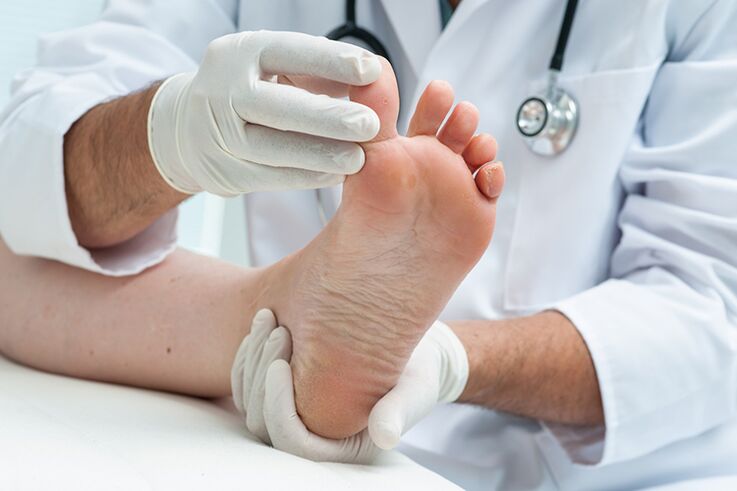
Only he can determine the type of fungus. For this, he may not only need an external examination of the feet, but also a laboratory examination of skin scraping.
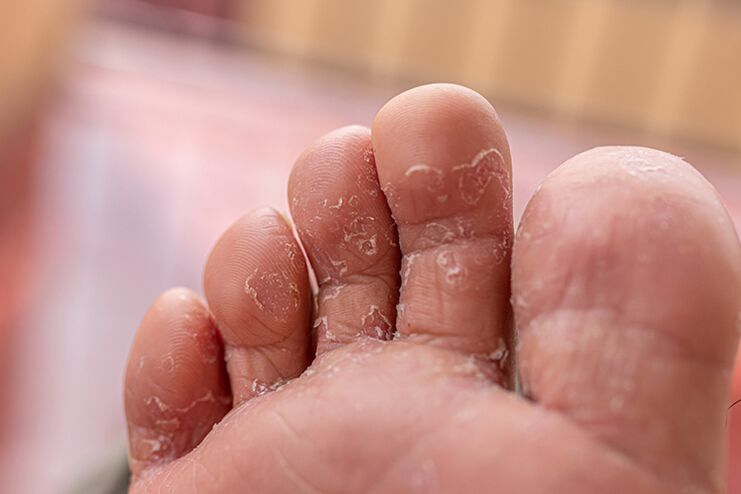
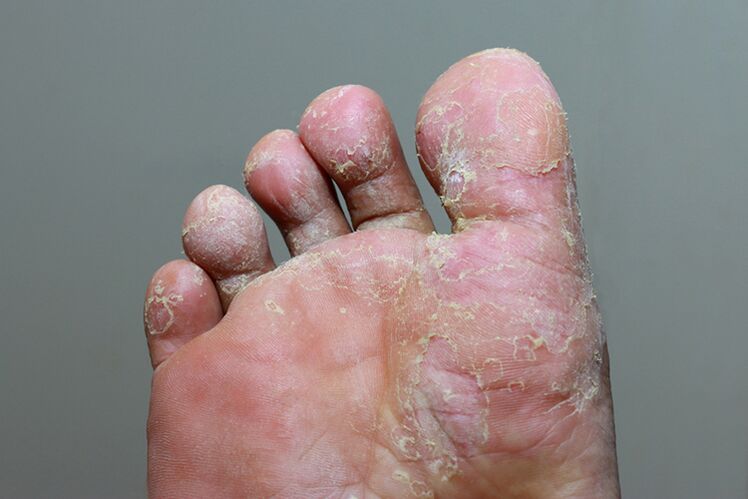
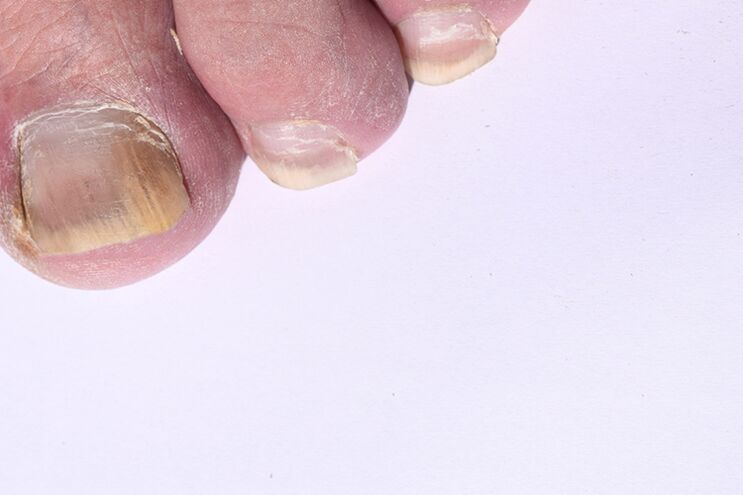
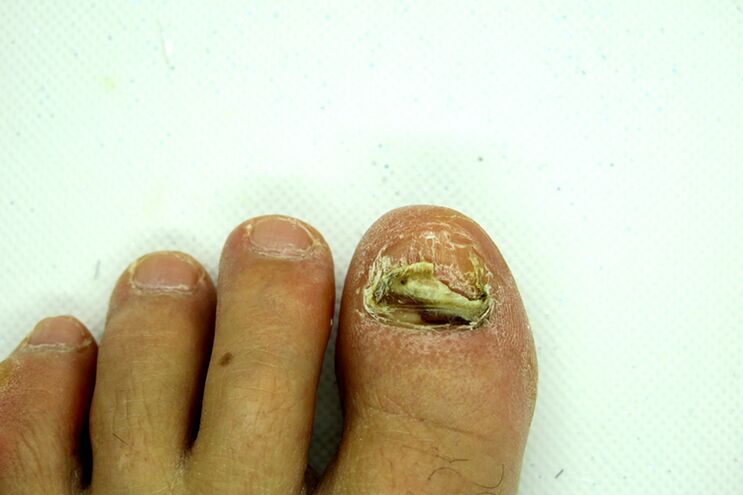
However, even the appearance of signs that are very similar to those shown in the photos has attracted attention and medical attention.
The treatment of this disease is complicated and needs to be carried out at home under the guidance of a doctor.
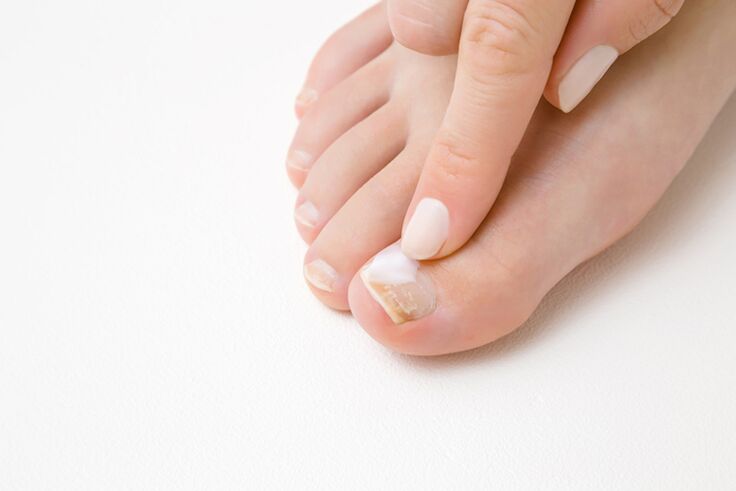
Fungus on little fingers
The fungus can affect the skin of any toe. But the little toes are most susceptible to infection. The little toes in tight shoes are often compressed, which can lead to abrasions and poor skin circulation. Due to the damage of the pinky nail, this disease develops very rapidly, faster than any other nail. If the little finger is infected, the infection will quickly touch the other fingers.
The treatment for fungus on little toes is the same as for fungus on other parts of the skin. For onychomycosis of the pinky nail, the most reasonable solution may be to remove the nail plate. This operation will not cause great inconvenience to the patient, because the nail on the little finger will grow back quickly. However, until the nails grow back (which may take 3-4 months), antifungal drugs must be used to prevent re-infection.
How to treat toe fungus?
The treatment of mycosis should start with the first shocking symptoms. First, you need to contact a dermatologist for a diagnosis. Before starting treatment, it is necessary to determine the presence of fungal diseases and the type of pathogenic microorganisms. To do this, the doctor will scrape or cut a piece of nail from the skin (if the nail is affected). Blood test is underway, sugar blood test. Mycosis of the skin of the feet must be distinguished from the following:
- Other infectious skin diseases;
- Allergic reactions;
- Skin diseases caused by diabetes, vascular diseases, stress and neurological diseases.
To treat leg mycosis, topical treatments (sprays, ointments, creams) are most commonly used. Only in severe cases can doctors prescribe antifungal drugs. The most commonly used tablets are fluconazole, itraconazole, and terbinafine.
Treatment is based on the use of antifungal drugs. This type of preparation contains substances that kill fungi (fungicides) or stop their reproduction (fungicides).
The most commonly used antifungal drugs are:
- Clotrimazole,
- Ketoconazole
- Terbinafine
- Nystatin,
- Miconazole
- Econazole
- Fluconazole.
Topical preparations with antibacterial, anti-inflammatory and keratolytic properties are also used. If suppuration occurs, an antibacterial agent is prescribed, that is, a bacterial infection is prescribed, an antibacterial agent should be prescribed. Anti-inflammatory drugs can effectively relieve discomfort symptoms such as itching and burning. However, they do not affect the real cause of the disease-pathogenic microorganisms. Keratolytics include zinc, sulfuric acid, and thiosalicylic acid ointments. They accelerate the regeneration of skin tissues by accelerating the shedding of dead skin epidermis.
In order to treat the mycosis of the feet, a bath with a fungicide-a solution of potassium permanganate, iodine, salt, baking soda, and boric acid is also used. It is best to take a shower 20 minutes before falling asleep. To prevent spore infections, chlorhexidine, iodine, hydrogen peroxide, and potassium permanganate should be used to treat healthy areas of the skin. To treat onychomycosis, varnishes with antifungal substances-Loceryl, exoderil, batrofen are used. These varnishes must be applied to the nail plate.
Ointments and creams must be applied to pre-washed and cleansed skin at the frequency specified in the product description. The smearing area of the ointment should be slightly larger than the area of visible lesions. To apply varnish on the nail plate, the nail must be steamed, the uneven edges must be polished with a file, and the surface of the nail must be degreased with an alcohol-containing solution.
In folk medicine, decoctions of medicinal plants can eliminate fungal diseases on the legs, including chamomile, calendula, sage, St. John's wort, mint, vinegar solution, onion and lemon juice.
What if the fungus on the finger does not disappear?
The treatment of fungal diseases is a long and difficult process. Fungal microorganisms are very tough and cannot eliminate them within a few days. Sometimes it takes months of careful treatment. In this case, treatment should not be interrupted for a day. The treatment of onychomycosis cannot be completed until a new healthy nail plate has grown.
It is also important to consider other factors related to the development of the disease. Failure to observe skin hygiene and optimal temperature conditions for the feet may invalidate all treatments. This means that the skin surface of the feet must be cleaned regularly to avoid overheating or hypothermia. It is also important to avoid mechanical damage to the skin, excessive pressure on the feet, cuts and injuries. Being overweight puts more pressure on your feet, so if you are overweight, you may want to consider losing weight.
If the patient keeps wearing shoes infected by the fungus, then any effective medicine will not help, because the new medicine will immediately replace the dead microorganisms. Therefore, it is necessary to eliminate all factors that cause reinfection. You can't walk into other people's shoes, socks. Socks should be washed thoroughly and replaced regularly. The inner surface of the shoe should be thoroughly sprayed with antifungal agent.
For persistent fungal diseases, you need to analyze your overall health. Perhaps this will help determine the cause of impaired immunity and blood circulation in the legs. Therefore, it is worthwhile to conduct a comprehensive examination to rule out problems with the heart, blood, blood vessels, and endocrine system organs.
Finally, the microorganism may simply develop resistance to the antifungal agent used. Then, it is necessary to change the drug. May need systemic antifungal drugs. The dosage of the drug should be selected by a professional dermatologist.
























